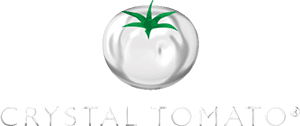1) The common causes of Skin Ageing and Pigmentation in Asians.
There are 2 main components of skin ageing: intrinsic ageing and extrinsic aging. Intrinsic aging is genetically programmed and proceeds with age regardless of what we do, while extrinsic aging is due to effects of environment on the skin, either directly or indirectly via oxygen free radicals, and may be slowed down with careful protection.
Asian skin ages with pigmentation more than with wrinkling. Of these environmental factors, UV light (eg sunlight, tanning booths), blue/visible light (eg sunlight and artificial light sources) and pollution are the biggest culprits.
2) How best to protect your skin against these environmental ravages leading to hyperpigmentation and premature skin ageing.
A good sunscreen reduces the penetration of UVA, UVB, blue light and infrared radiation into the skin, thereby reducing extrinsic skin ageing. Some also containantioxidants that counteract damaging oxygen free radicals generated by pollution and UV rays.
Regardless of how good a sunscreen is, if it is not used as generously as it is used in laboratory testing, the UV protection will be much less than what is stated on the label.
Taking oral antioxidants, such as colourless carotenoids supplement that preferentially concentrates in the skin, is evenly distributed and not removed by perspiration and wiping, will provide further protection internally from sun damage.
3) The main considerations when choosing a sunscreen:
Choose a sunscreen with:
i.) Minimum SPF of 30: indicates protection against UVB which causes sunburn. Many countries legislate a maximum of SPF 50+ on labels as the additional benefit beyond SPF 50 is small.
ii.) At least PA++++ or PPD16: protection against deeply-penetrating UVA which causes pigment darkening and generates 46% of free radicals. As UVA penetrates cloud cover and glass, sunscreen should be used even on rainy or cloudy days and when indoors.
iii.) Blue light protection of at least 35%: indicates protection against visible light (VL) which induces more noticeable, persistent pigmentation than UVA alone, and generates 33% of free radicals. Some sunscreens claim to “protect” against blue light but are merelytopical antioxidants that counteract free radicals generated by VL but do not actually shield against VL.
iv.) Anti-pollution: environmental pollution has been shown to be a major culprit for hyperpigmentation, worsens melasma and causes premature skin ageing. Look for a sunscreen that is medically proven to protect against pollution, usually through anti-oxidant effect.
v.) IR-A protection: infrared radiation (from heat sources and sun exposure) contributes to wrinkles and premature skin ageing.
vi.) Non-comedogenic and hypoallergenic: this would be important for younger, acne-prone skin and sensitive skin to minimise breakouts andskin allergies.
Ensure all the claims printed on the sunblock packaging are backed by laboratory or clinical studies – ask if in doubt.
This article was first published on Lianhe Zaobao and the English version published on our website with permission. Read the original article here.
Written by: Dr Wong Su-Ni, Dermatologist
Senior Consultant & Medical Director, Dr SN Wong Skin, Hair, Nails & Laser Specialist Clinic
Mt Elizabeth (Orchard) Medical Centre



